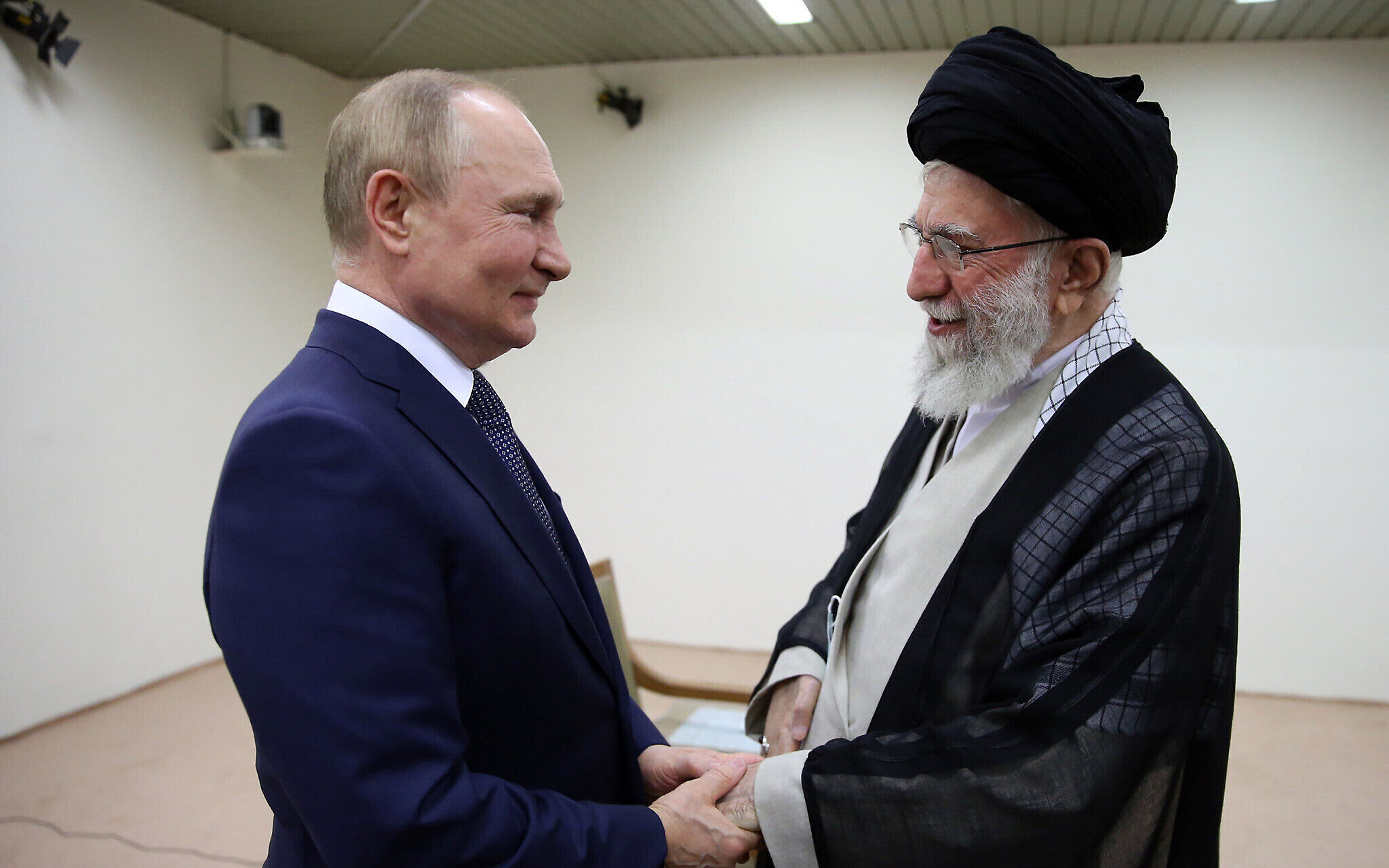A new Iranian satellite has surveillance capabilities that present a serious problem for Israel due to its ability to monitor sensitive sites in the country, snapping high-resolution images of objects on the ground, experts have warned.
The Khayyam satellite, built and launched by Russia on behalf of Iran, lofted into orbit on Tuesday from the Russia-controlled Baikonur cosmodrome in Kazakhstan.
Hours later Iranian media reported that the first telemetry had been received from the spacecraft.
The Iranian Space Agency has said the satellite will be used for agriculture and water resources planning, and the Russian embassy in Tehran said the spacecraft was devised for non-military purposes, the New York Times reported Tuesday.
But Western experts have no doubts that the satellite is intended for spying.
Get The Times of Israel's Daily Edition by email and never miss our top stories
“As far as Iran is concerned, this is a real breakthrough — for the first time an Iranian owns and operates a satellite with a high imaging resolution, much better than what they had until now,” Tal Inbar, a senior research fellow at the non-partisan US-based Missile Defense Advocacy Alliance, told The New York Times.
Inbar said the satellite’s imaging capabilities will present a significant challenge to Israel, which has itself used such technology for a long time.
“From now on, Iran will be able to collect much more accurate intelligence information for military operations of their forces as well as for the organizations they support,” Inbar said and noted that includes real-time operations by Iran or any of the militia groups it backs.
“This is a significant narrowing of the technological gap between Iran, and Israel and the United States,” Inbar said.
Khayyam was name of the renowned Iranian polymath and poet #Iran
Now this 600 kg satellite is named after him. It was launched to space today morning with the help of Russia pic.twitter.com/5o6upUK2Gp
— Soureh 2 ???????????????? (@Soureh_design2) August 9, 2022
Despite Iran’s space agency claims that Khayyam is for internal, peaceful purposes, the Times reported that analysts tied to Iran’s Islamic Revolutionary Guard Corps have boasted on social media that it will be able to monitor US military bases and Israel.
Though Iran has in the past managed to launch small satellites of less than 50 kilograms, Khayyam weighs nearly half a ton.
Continuous monitoring
Last week, two Western security officials told the Washington Post that the satellite has a resolution of 1.2 meters, meaning it can photograph objects of at least that size.
It is a significant improvement over Iran’s existing abilities but still not near the capabilities of US spy or high-end commercial satellite imagery providers, they said.
But, perhaps the biggest boost for Iran will be the ability to use the satellite to continuously monitor locations, including military sites in Israel, or other key infrastructure in Gulf states, the officials said on condition of anonymity as they were not authorized to speak about the subject.
Experts say that Iran could also share the information it gathers with the terror groups it backs, such as Hezbollah in Lebanon.
Richard Goldberg, a former Iran analyst in the Trump administration’s National Security Council and who is now a senior adviser for the Washington-based think tank the Foundation for Defense of Democracies, told the Washington Post that the satellite is a “clear and present” danger to the US and its allies.
“As Iran perfects its missile arsenal — from short, medium to longer-range missiles, alongside its growing UAV capability throughout the Middle East — being able to sync those capabilities with satellite capabilities and surveillance will only increase the lethality of the Iranian threat,” Goldberg said.
However, Khayyam’s first job may not be to spy on Israel, but Ukraine.

Russian soldiers walk along a street in Mariupol on April 12, 2022. (Alexander Nemenov/AFP)
The Western security officials told the Post that Russia intends to use Iran’s Khayyam satellite to assist its ongoing invasion of its neighbor, which it began in February and which has encountered fierce Ukrainian resistance.
Moscow will use the satellite for several months to watch military targets, the two officials said.
Russia’s embassy in Washington declined to comment on their claims, the Post said. US administration officials would also not comment on Russia’s possible use of the satellite against Ukraine.
First signals received
Iran’s Fars new agency reported Tuesday that the first data was received from the satellite.
According to Fars, the satellite is in an orbit 500 kilometers (310 miles) above Earth and will send images four times a day.
Iranian Minister of Communications and Information Technology Issa Zarepour, who was in Kazakhstan to watch the launch, said the launch of the satellite on a Russian rocket “is the beginning of Iran-Russia’s strategic cooperation in the space field.”
Zarepour added that his country will also continue working to develop its own launch capabilities.
In June, the Iranian Space Agency said that seven more satellites are planned, Fars reported.
Though the launch is seen as an example of greater cooperation between Iran and Russia as Moscow faces international isolation over its invasion of Ukraine, the deal for the satellite project was negotiated four years ago.
As Moscow’s international isolation grows under the weight of Western sanctions over Ukraine, the Kremlin is seeking to pivot Russia toward the Middle East, Asia and Africa and find new clients for the country’s embattled space program.
Russian President Vladimir Putin met Iranian counterpart Ebrahim Raisi and Supreme Leader Ayatollah Ali Khamenei in Tehran last month — one of his few trips abroad since the invasion began.

In this picture released by the official website of the office of the Iranian supreme leader, Supreme Leader Ayatollah Ali Khamenei, right, and Russian President Vladimir Putin greet each other during their meeting in Tehran, Iran, July 19, 2022. (Office of the Iranian Supreme Leader via AP)
The US has said that Iran has offered to sell Russia drones for use in Ukraine.
An unnamed US official told CNN on Tuesday that Washington believes Russian forces have begun training in Iran to use combat drones made by the Islamic Republic.
Khayyam, apparently named after the 11th-century Persian polymath Omar Khayyam, was not be the first Iranian satellite that Russia has put into space. In 2005, Iran’s Sina-1 satellite was deployed from Russia’s Plesetsk cosmodrome.
The first successful satellite launch by Iran was in 2009 but in the following decades about 67 percent of orbit launches failed. Other space agencies around the world have a 5% failure rate, the New York Times said.
Western governments worry that satellite launch systems incorporate technologies interchangeable with those used in ballistic missiles capable of delivering a nuclear warhead, something Iran has always denied wanting to build.
Iran successfully put its first military satellite into orbit in April 2020, drawing a sharp rebuke from the United States.
AFP contributed to this report.


